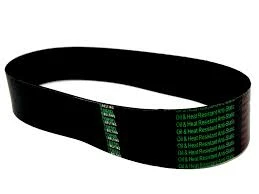- Arabic
- French
- Russian
- Spanish
- Portuguese
- Turkish
- Armenian
- English
- Albanian
- Amharic
- Azerbaijani
- Basque
- Belarusian
- Bengali
- Bosnian
- Bulgarian
- Catalan
- Cebuano
- Corsican
- Croatian
- Czech
- Danish
- Dutch
- Afrikaans
- Esperanto
- Estonian
- Finnish
- Frisian
- Galician
- Georgian
- German
- Greek
- Gujarati
- Haitian Creole
- hausa
- hawaiian
- Hebrew
- Hindi
- Miao
- Hungarian
- Icelandic
- igbo
- Indonesian
- irish
- Italian
- Japanese
- Javanese
- Kannada
- kazakh
- Khmer
- Rwandese
- Korean
- Kurdish
- Kyrgyz
- Lao
- Latin
- Latvian
- Lithuanian
- Luxembourgish
- Macedonian
- Malgashi
- Malay
- Malayalam
- Maltese
- Maori
- Marathi
- Mongolian
- Myanmar
- Nepali
- Norwegian
- Norwegian
- Occitan
- Pashto
- Persian
- Polish
- Punjabi
- Romanian
- Samoan
- Scottish Gaelic
- Serbian
- Sesotho
- Shona
- Sindhi
- Sinhala
- Slovak
- Slovenian
- Somali
- Sundanese
- Swahili
- Swedish
- Tagalog
- Tajik
- Tamil
- Tatar
- Telugu
- Thai
- Turkmen
- Ukrainian
- Urdu
- Uighur
- Uzbek
- Vietnamese
- Welsh
- Bantu
- Yiddish
- Yoruba
- Zulu
Nov . 06, 2024 00:40 Back to list
Exploring Variable Speed Control for Belt and Pulley Systems in Mechanical Engineering
Understanding Variable Speed in Belt and Pulley Systems
In the realm of mechanical engineering and machinery design, variable speed systems are critical for enhancing efficiency and performance. One common application of this technology is in belt and pulley systems, which are widely used in various industrial machines, automobile engines, and public transport systems. Understanding how variable speed works in these systems can significantly impact productivity and operational flexibility.
What is a Belt and Pulley System?
A belt and pulley system consists of a belt that wraps around two or more pulleys. The pulleys are attached to shafts, which can be connected to motors, engines, or other machinery. The belt transmits power from one pulley to another, allowing for the transfer of energy and motion. The speed at which the belt moves can vary based on the diameter of the pulleys, the tension in the belt, and the overall arrangement of the system.
The Importance of Variable Speed
Variable speed control allows machinery to operate at different speeds based on specific needs or conditions. In a belt and pulley system, this means that the output speed can be adjusted without changing the motor speed. This is crucial for applications that require precise control over the movement and timing of components. For instance, in a manufacturing assembly line, certain processes may need slower speeds for accuracy, while others may require higher speeds for efficiency.
How Variable Speed is Achieved
Several methods can achieve variable speed in a belt and pulley system. One of the most common approaches is the use of adjustable pulleys. These pulleys can change their effective diameter, allowing the belt to ride higher or lower. By increasing the diameter of the driving pulley or reducing the diameter of the driven pulley, the output speed can be increased, and vice versa.
Another method involves using variable frequency drives (VFDs) to control electric motors. VFDs adjust the frequency and voltage supplied to the motor, which in turn affects the speed of the motor and, consequently, the speed of the belt and pulley system. This method is especially favored in applications requiring a broad range of speeds and advanced control features.
Benefits of Variable Speed Systems
variable speed v belt pulley

1. Increased Efficiency Variable speed systems allow machinery to operate at optimal speeds for different processes, reducing energy waste and enhancing overall efficiency.
2. Enhanced Control With the ability to adjust speeds, operators can fine-tune processes. This is particularly beneficial in applications such as food processing, where different products may require different handling speeds.
3. Reduced Wear and Tear Operating machinery at variable speeds can mitigate excessive wear on components. This is important in prolonging the life of the machinery and reducing maintenance costs.
4. Versatility Variable speed systems add versatility to industrial processes, enabling machines to be repurposed for different tasks—adapting to changing production needs without significant equipment overhauls.
Challenges and Considerations
While variable speed systems offer numerous advantages, they also come with challenges. For instance, the design of adjustable pulleys and the implementation of VFDs can increase the complexity and cost of maintenance. Electrical systems may require more sophisticated training and monitoring to ensure optimal operation.
Moreover, the selection of appropriate materials and gear ratios is essential for maintaining efficiency and durability. Engineers must carefully design these systems to navigate trade-offs between speed control and potential mechanical losses.
Conclusion
The integration of variable speed capabilities in belt and pulley systems represents a significant advancement in mechanical engineering. As industries continue to demand more efficient and flexible machinery, understanding and implementing these systems becomes ever more essential. Through innovation and careful design, variable speed belt and pulley systems will continue to play a vital role in enhancing productivity and operational efficiency across various sectors.
-
Korean Auto Parts Timing Belt 24312-37500 For Hyundai/Kia
NewsMar.07,2025
-
7PK2300 90916-T2024 RIBBED BELT POLY V BELT PK BELT
NewsMar.07,2025
-
Chinese Auto Belt Factory 310-2M-22 For BMW/Mercedes-Benz
NewsMar.07,2025
-
Chinese Auto Belt Factory 310-2M-22 For BMW/Mercedes-Benz
NewsMar.07,2025
-
90916-02660 PK Belt 6PK1680 For Toyota
NewsMar.07,2025
-
drive belt serpentine belt
NewsMar.07,2025

